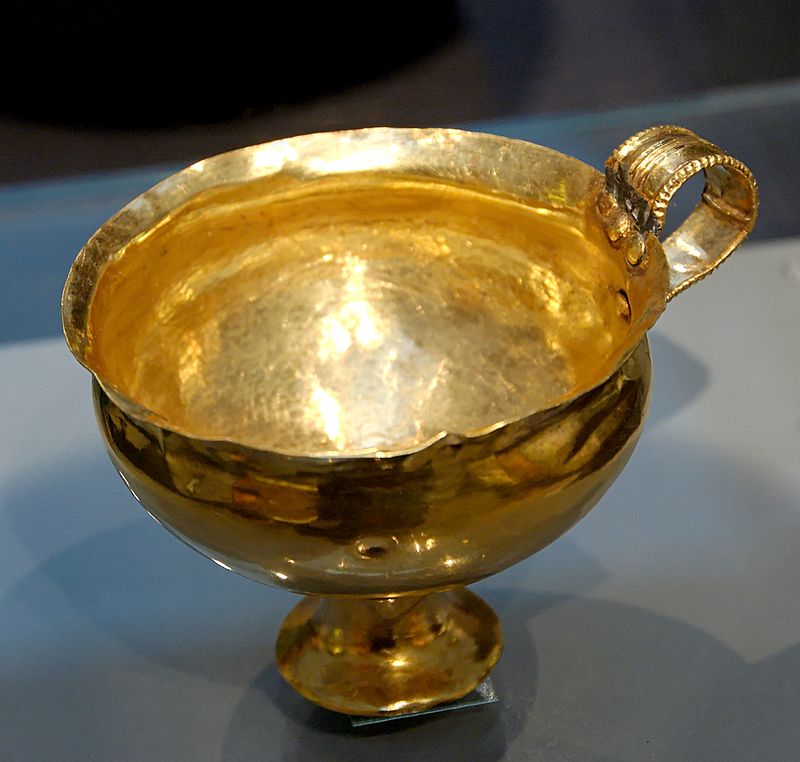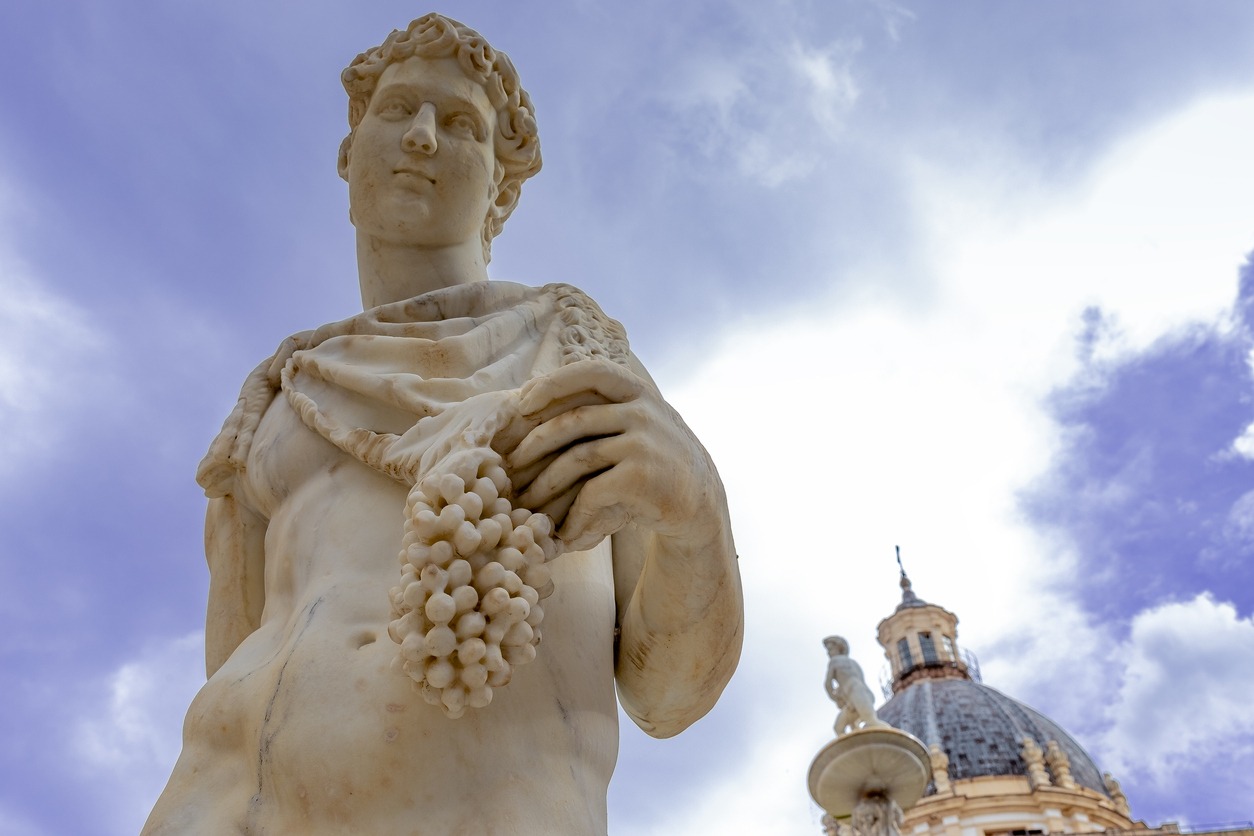Greece is a country where modern living is intertwined with the country’s rich ancient history. As cars race through the streets of Athens, the iconic Parthenon stands in the background, a reminder of the nation’s ancient past. Tourists capture ocean views from the Temple of Poseidon, snapping pictures on their cell phones. Wine is a prime example of when modern life intersects with ancient tradition, symbolizing the continuation of Greek culture across time.
Wine has deeply entrenched itself in Greek culture for centuries. Even in ancient times, esteemed writers like Euripedes celebrated this drink, proclaiming, “Where there is no wine there is no love.” This association between wine and life’s joys, such as love, indicates that winemaking must have been a longstanding tradition among the Greeks.
Get answers to your questions by checking out car rental in greece.
History of Wine in Ancient Greece
The history of wine in ancient Greece is a fascinating journey that spans thousands of years and has had a significant impact on Greek culture, society, and even religious practices. Wine was more than just a beverage; it held cultural, social, and religious importance, and its production and consumption were deeply ingrained in Greek life.
Early Origins: Minoans and Mycenaeans
The cultivation of grapevines and winemaking in ancient Greece can be traced back to prehistoric times, as early as the Neolithic period (around 6000 BCE). Wild grapevines were abundant in the region, and it is believed that ancient Greeks learned how to cultivate and ferment grapes to produce wine from their interaction with neighboring civilizations like the ancient Egyptians and Phoenicians.
It was in Ancient Greece that modern wine culture started, and wine consumption stopped being just a sacred act, as before, priests and rulers controlled the vineyards. By the rise of ancient Greece, records began shedding light on the role wine played in their society.
By the early Bronze Age, domestic cultivation became widespread. At the rise of the Minoan and Mycenaean civilizations, wine was part of everyday life for production and consumption. The Mycenaean and Minoan cultures had significant interactions primarily driven by trade and commerce.
Around 1200 BC, a group from northern Greece invaded the southern Mycenaean region, which was then ruled by a monarchy. This invasion led to widespread devastation, forcing numerous impoverished families to seek safety in fortified cities.
To strengthen their influence, the invaders granted more privileges to the common people, effectively diminishing the power of the monarchs and aristocrats. Over time, this led to the gradual emergence of democratic city-states, providing common people with greater freedoms and opportunities.
The Minoan civilization on Crete was introduced to Egyptian winemaking methods through trade with ancient Egypt, and this influence likely extended to Mycenaean Greece. Evidence from excavations near Minoan palaces, such as at Archanes, revealed associated vineyards, and a villa rustica dedicated to wine production was unearthed at Kato Zakros in 1961.
In the mid-second millennium BC, wine held a significant role in Minoan culture, often linked to the sacred bull through horn-shaped drinking cups called rhyta. The name “Oinops” (meaning “wine-colored” in Greek) appears in Linear B tablets at Knossos and is mentioned twice in Homer’s writings. Grapes, alongside olives and grain, were vital agricultural crops that contributed to sustenance and community development. The ancient Greek calendar followed the vintner’s year.
A notable wine press was discovered in Palekastro, Crete, from where the Mycenaeans likely spread viticulture to other Aegean islands and possibly to mainland Greece. During the Mycenaean period, wine gained greater cultural, religious, and economic importance. Linear B tablets provide details about wine, vineyards, wine merchants, and even early references to Dionysus, the Greek god of wine. The Greek myths of Dionysus and the cultural hero Aristaeus were intertwined with the arrival of winemaking culture.
Remnants of amphoras indicate that the Mycenaeans actively traded wine throughout the ancient world, reaching places like Cyprus, Egypt, Palestine, Sicily, and southern Italy. This extensive trade network contributed to the dissemination of Greek winemaking knowledge and further enriched the wine culture of the ancient Mediterranean.
Trade and Colonization
Trade played a crucial role in the dissemination of wine culture. With the emergence of democratic city-states, ordinary people had more opportunities to cultivate crops like vineyards and olive groves. This resulted in the rise of a new class of merchants who traded wine. Wine consumption increased beyond religious rituals, becoming a popular beverage for pleasure.
As the Greeks established colonies throughout the Mediterranean and beyond, they spread their knowledge of viticulture and winemaking. They brought grape vine cuttings with them and established vineyards in various regions. This led to the growth of the wine trade and the spread of grapevines throughout the Mediterranean. The settlers, already experienced in viticulture and winemaking, were able to improve and cultivate already existing vineyards.
The colonization of various Mediterranean regions further expanded the wine trade. Greek settlers established colonies, bringing grapevines along, leading to flourishing vineyards in new areas. As the ancient Greeks moved west, they established vineyards in Greek colonies in southern Italy and Sicily. Greeks even called the southern part of Italy “Oenotria,” which means “the land of the vines,” because of its exceptional climate and soil for growing grapes.
Other Greeks settled in Southern France, in places like Massalia (Marseille), while others moved east all the way to the shores of the Black Sea. These regions were particularly renowned for their wine production.
Athens, particularly in the Attica region, became a major market for wine due to its favorable environment and significant production. Greek islands like Thasos and Santorini gained prominence for their wine, with the latter benefiting from its rich volcanic soil.
Wine trading partners included Crimea, Egypt, Scythia, and Etruria, with Greece exchanging viticultural and winemaking knowledge with these regions. The discovery of a shipwreck off Southern France with a substantial amount of Greek wine signifies the extensive wine commerce from Greece.
Ancient Winemaking Practices and Influences
The ancient Greeks referred to cultivated vines as “hemeris,” meaning “tame,” to distinguish them from their wild counterparts. According to myths, the Argonauts carved a massive vine rootstock into an image of the Great Goddess, setting it up on the coast of Phrygia.
Theophrastus, a 4th-century BC Greek writer, documented several Greek influences and innovations in viticulture. Among these were the study of vineyard soils to match specific grapevines, the practice of minimizing yields for better flavor concentration, and the use of suckering and plant cuttings for new vineyard plantings. The Greeks also employed vine training techniques with stacked plants for easier cultivation and harvesting.
While exact ancestry remains unknown, several grape varieties grown by the ancient Greeks, like Aglianico, Grechetto, and Trebbiano, have distinct Greek heritage. Some Greek viticulture practices were not widely adopted by other regions, such as using mysticism to ward off disease and bad weather, as seen in the ritual of tearing a white rooster in two and burying it near the vineyard.
The Greeks also practiced early forms of winemaking techniques, including pigeage, where grapes were crushed by foot inside baskets placed in vats, and straw wine production, drying freshly harvested grapes on mats before pressing. They deliberately harvested unripe grapes to produce acidic wine for blending and discovered that boiling grapes must add sweetness. Additionally, they believed in enhancing wine by adding resin, herbs, spices, seawater, brine, oil, and perfume, practices that influenced modern wines like Retsina, mulled wine, and vermouth.
The tradition of cries to “Dionysus!” during wine treading persisted until the Second Council of Constantinople in 691 AD, when it was explicitly forbidden, and “Kyrie eleison” was recommended as a substitute.
How Ancient Greek Wine Influenced Modern Wine Culture
The origin of modern wine culture can be traced back to Greece, where the Greeks exported not only their wine but also their way of life, including vine-growing, winemaking, and the enjoyment of wine, to various ports in the Mediterranean basin.
The ancient Greek philosophers Socrates and Plato both praised wine for its ability to soothe the spirit, ease the mind’s worries, and enhance life’s joys. They considered wine a tool for testing and shaping a person’s character, as well as a cost-effective and innocent pleasure. Sounds familiar, right?
In ancient Greece, the term “symposium” was ubiquitous, and it literally meant gatherings where people came together to eat, drink, converse, and enjoy each other’s company during and after meals. These symposia were popular among well-to-do individuals, offering opportunities for discussions, philosophical exchanges, and revelry.
Depictions of such gatherings can be found on various Greek vases and sculptures. The host, typically an aristocratic man, would arrange the symposium, and guests would recline on klinai (recliners) while drinking from terracotta or more luxurious cups made of bronze, silver, or even gold.
Beyond social and philosophical contexts, wine served medicinal purposes in ancient Greece. Hippocrates, the renowned physician, prescribed different wines based on the specific disease or ailment.
Dionysus, the god of wine, grape harvest, fertility, and various other aspects of life, was an integral part of ancient Greek culture. As the embodiment of vibrant and colorful living, he was also associated with religious ecstasy and festivities.
The ancient Greeks’ love for wine and its role in their culture is evident in the enduring legacy of wine culture that has influenced societies worldwide.
What is Ancient Greek Wine Like?
Ancient Greek wine was distinct from modern wine. It often contained additional ingredients like herbs, ash, and pine resin. They even used salty seawater to preserve and enhance the flavor, particularly in coastal regions and islands like Santorini. Honey is sometimes added to sweeten the wine.
In ancient times, a wine’s reputation was tied to the region it originated from rather than being attributed to a specific producer or vineyard. In the 4th century BC, the most expensive wine available in the agora of Athens was the one from Chios, selling for a price between a quarter and two drachmae for a chous (about 3 liters, equivalent to four standard 750 ml wine bottles today).
Greek poets acted as early wine critics, praising certain wines for their virtues while offering less favorable reviews for those that fell short. Among the wines frequently cited as being of good quality were those from Chalkidike, Ismaros, Khios, Kos, Lesbos, Mende, Naxos, Peparethos (present-day Skopelos), and Thasos. Two wines with unknown origins, Bibline and Pramnian, were also highly praised. Bibline, believed to have a similar style to the Phoenician wine from Byblos, was appreciated for its perfumed fragrance. Pramnian, a dark wine with good aging potential, was found in various regions, notably Lesbos, Icaria, and Smyrna.
The earliest named wine mentioned in historical records is “Dénthis,” a wine celebrated by lyrical poet Alkman (7th century BC) from the western foothills of Mount Taygetus in Messenia. The Lemnio grape, described by Aristotle as a specialty of the island of Limnos, is believed to be the modern-day Lemnió varietal, a red wine with a bouquet of oregano and thyme, making it the oldest known varietal still cultivated.
Sweet and aromatic wines were the most common styles in ancient Greece, though drier wines were also produced. The color of wines varied from dark, inky black to tawny and almost clear. Oxidation was a challenge to control, often causing wines to lose quality beyond the next vintage. However, well-stored and aged wines were highly valued, described by Hermippus as having a bouquet of “violets, roses, and hyacinth.” Comedic poets humorously noted that Greek women preferred “old wine but young men.”
The Greeks diluted their wine with water in precise proportions in a vessel called krater. They believed it promoted self-control and composure – both of which are valued traits in their society. Indeed, ancient Greeks held the belief that only non-Greeks, whom they often referred to as barbarians, consumed undiluted wine, leading to drunken behavior and uncivilized conduct.
Retsina, a wine that was popular during Ancient Greece, continues to be produced in modern-day Greece. It is a white wine infused with pine resin, which imparts a distinctive and robust pine flavor to the wine.
Wine in Greek Culture
Mythological significance
Wine played a prominent role in Greek mythology. Dionysus, the god of wine, revelry, and ecstasy, was a central figure in Greek religious beliefs. The cult of Dionysus involved ritualistic celebrations where wine consumption played a crucial part. Legends of Dionysus, such as the tale of his discovering wine and teaching its production to mortals, were essential in shaping the Greek perception of wine.
Wine in everyday life
As the art of winemaking developed, wine became a staple of Greek daily life. It was consumed not only for pleasure but also as a safer alternative to water, as the alcohol content killed harmful microorganisms. The wine was typically mixed with water before drinking, and the ratio could vary depending on personal preference or the occasion. The symposium, a social gathering of male citizens, often involved wine drinking, intellectual discussions, and entertainment.
Influence on art and literature
The wine had a profound impact on ancient Greek art and literature. Wine-themed pottery, known as “kylixes” and “kraters,” depicted scenes of Dionysian revelry, symposia, and other aspects of wine culture. Famous playwrights such as Euripides and Aristophanes often incorporated wine-related themes into their works.
Wine and the gods
Wine held a sacred place in Greek religious practices. It was offered to the gods as part of various rituals and festivals. Additionally, in the symposium, a portion of the wine was traditionally poured as a libation to honor the gods and ancestors.
Medical use
The Greeks extensively studied the medicinal properties of wine, and renowned figures like Hippocrates conducted significant research on the subject. Hippocrates used wine as a remedy for fevers, to aid in convalescence, and as an antiseptic. He even observed its effects on his patients’ stool.
Greek physicians prescribed various types of wine for analgesic, diuretic, tonic, and digestive purposes. Despite recognizing some adverse health effects, particularly when consumed excessively, they were well aware of wine’s potential benefits. Athenaeus frequently mentioned wine’s ability to cause hangovers and suggested remedies for it.
The poet Eubulus emphasized that three bowls (kylikes) of wine represented the ideal amount to consume, highlighting moderation. This notion of three bowls as a symbol of temperance appears repeatedly in Greek writings. In modern terms, the standard 750 ml wine bottle typically contains about three to six glasses of wine, depending on the serving size.
Conclusion
The wine culture of ancient Greece had a lasting impact. Greek influence spread through their exportation of viticulture, winemaking, and wine consumption to ports across the Mediterranean, establishing a foundation for wine-loving civilizations to come, and wine remains a significant part of life in those regions to this day. Notably, wines like Retsina, which originated in ancient Greece, are still produced and enjoyed in modern-day Greece.
The production and consumption of wine continued to be an integral part of Greek society throughout antiquity. The legacy of ancient Greek winemaking techniques and traditions persisted through the ages and has greatly influenced the wine culture of modern Greece and the broader Mediterranean region.







